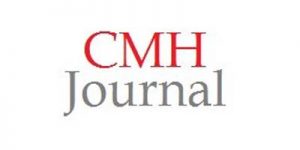By Matthew Wiseman, PhD Candidate
Department of History, Wilfrid Laurier University
Born in Toronto on 2 June 1920, Dr. George Lindsey was son to Lieutenant Colonel Charles Bethune Lindsey and his wife Wanda Casmira (née Gzowski). He attended Trinity College at the University of Toronto and earned an Honours Bachelor of Arts in Mathematics and Physics in 1942. After graduating with distinction, Lindsey enlisted in the Royal Canadian Artillery to serve in Canada with the Canadian Army Operational Research Group. He also served overseas with the British Army Operational Research Group, where he researched radar, which was then clandestine military technology still in its infancy.
Following his retirement from the Canadian Army in 1945, Lindsey resumed his studies and obtained a Master’s degree in Physics at Queen’s University in 1946, before returning overseas to complete a Doctor of Philosophy in the Cavendish Laboratory—Department of Physics—at the University of Cambridge, England. As both an undergraduate and graduate student, he won numerous scholarships for his research in nuclear physics relative to artificial radioactivity and radiation from light nuclei under proton bombardment. But upon completion of his Doctoral degree in 1950, his career with the Canadian government began and his research focus shifted to air defence and to strategic, missile, and naval security.
Lindsey’s first position as a government employee was with the Defence Research Board’s Operational Research Group. Shortly after being hired he was posted to the RCAF Air Defence Command as a Senior Operational Research Officer and Scientific Adviser at St. Hubert, Quebec, and later promoted to Director of the Defence Systems Analysis Group for the Canadian Chiefs of Staff. He held these positions until September, 1961, at which point he became Chief of the Operational Research Group at the Anti-Submarine Warfare Research Centre of the Supreme Allied Commander for NATO’s Atlantic Headquarters in La Spezia, Italy.
Lindsey returned to Canada in September, 1964, and was appointed Deputy Chief of Operational Research and shortly thereafter, Senior Operational Research Scientist in the Operational Research Division, Canadian Forces Headquarters. Three years later he was appointed Director General of the Operational Research Division, and of the Operational Research Establishment of the Defence Research Board. In subsequent reorganization his title changed to Chief of Defence Research and Analysis Establishment of the Department of National Defence (DND).
While working at the DND Lindsey had access to statistical data provided by what was, at the time, the most up-to-date intelligence available to the Canadian government. As an aerospace physicist, it was his job to interpret and analyze the data relative to Canada’s geostrategic position, and recommend an appropriate course of action to augment assessments which took place at the highest levels of defence planning and policy making. In short, Lindsey was a bridge between science and government.
He retired from the DND in 1987 but applied his experience in weapons, arms control and deterrence as a Senior Research Fellow at the International Institute for Strategic Studies in Toronto. As an advocate for nuclear disarmament, Lindsey spent much of the 1990s lecturing and publishing on Canada’s past as it related to contemporary security issues. He unfortunately passed on 6 September 2011 at the age of 91, but his life’s work stands as an invaluable source pertaining to technological interpretations from inside the DND and provides a useful reference for historians covering a very active and often volatile period of close to forty years, during which the Canadian government employed experts to successfully apply science in the attempt to better understand the geostrategic vulnerabilities of their nation so that its defence policy could benefit from the resulting solutions and adjust accordingly.


